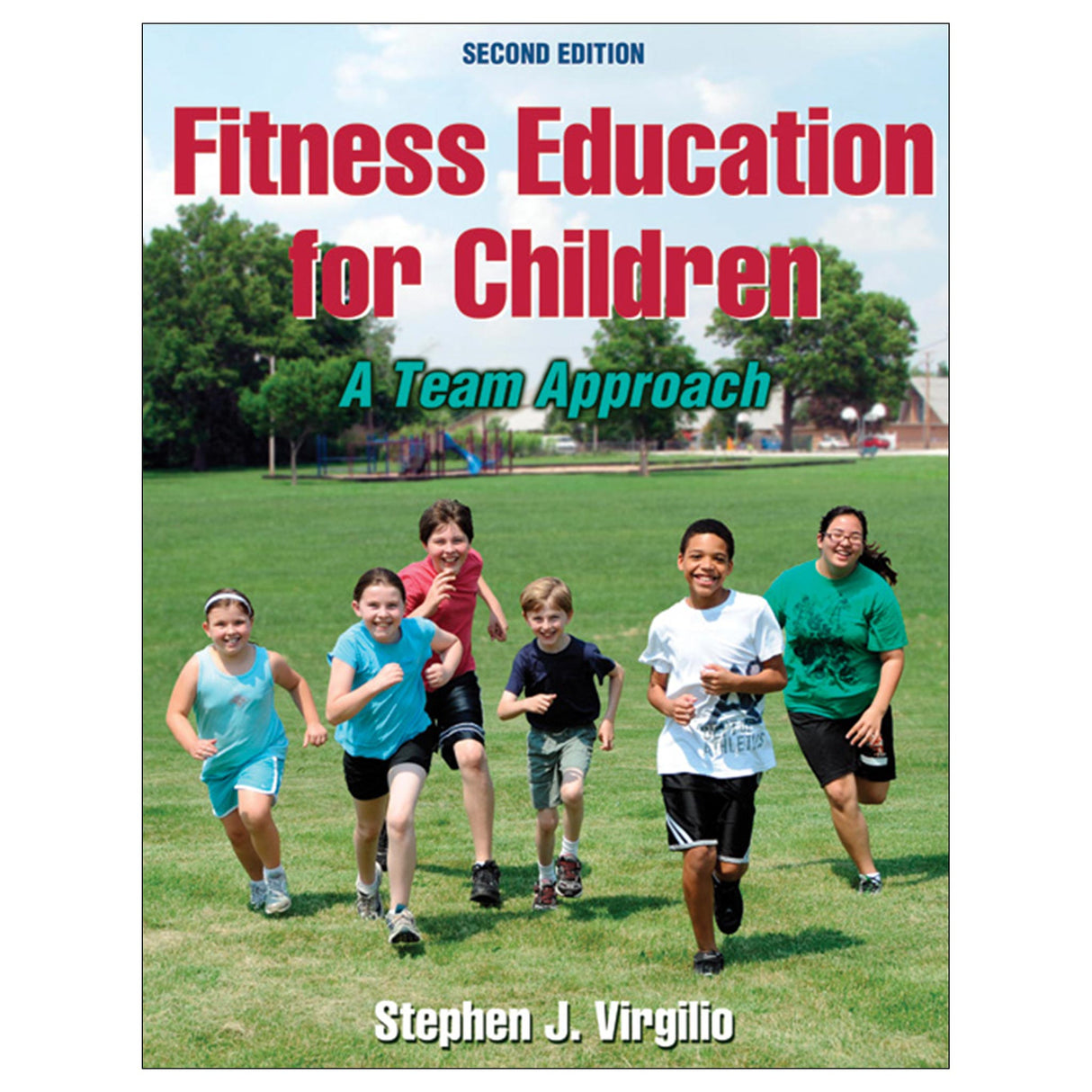Fitness Education for Children-2nd Edition
A Team Approach
Author: Stephen J. Virgilio
$46.00 USD
In the latest edition of his book Fitness Education for Children: A Team Approach, Stephen Virgilio emphasizes the importance of collaboration to combat obesity and promote active lifestyles. Virgilio shows how you can combine the efforts of physical educators, administrators, classroom teachers, school volunteers, parents, school lunch personnel, health service professionals, and others in the community.
Virgilio provides new suggestions and information on incorporating the team approach to help schools meet wellness policy objectives. He spells out a school wellness approach with the physical educator as physical activity director and guides you in integrating school fitness breaks and activities in the classroom curriculum. He also
• offers new exercise, rhythmic, and pedometer activities as well as new fitness games;
• provides current research and statistics on childhood obesity and approaches to intervention;
• includes a completely new chapter on yoga (including activities) for school-aged children; and
• presents information on the stages of behavioral change, helping teachers modify long-term health behaviors in children.
This new edition also includes updated Activitygram/Fitnessgram procedures and a discussion of SMART goals. You’ll find a new section on teaching children with autism spectrum disorder and the current USDA’s MyPlate. You’ll also receive the most recent physical activity guidelines for children from the Centers for Disease Control and Prevention and help in developing programs that support those guidelines. And you’ll find updated references throughout the book as well as new websites for further information.
Fitness Education for Children also offers strategies for cross-curricular activities and classroom collaborations as well as suggestions for using technology to enhance your communication with students and parents.
Written for veteran and new physical educators as well as students preparing to enter the profession, this text covers the gamut of issues that educators need to know to provide effective fitness education. Those issues include the principles of fitness, teaching children with disabilities, planning lessons, teaching fitness concepts, collaborating with other teachers, and getting parents and your community involved. You also receive updated developmental exercises and active games and activities, and you’ll learn how to hold exciting schoolwide events.
Fitness Education for Children offers a blueprint for battling obesity in school-aged children by promoting healthy lifestyles. This book will help you understand the educational philosophy, instructional strategies, assessments, and pedagogical models that will transform your curriculum into a springboard to a lifetime of healthy activity for the children you teach.
Audience
Primary text for elementary physical education teachers. Supplemental resource for middle school and high school physical education teachers and classroom teachers. Also a resource for camp directors, childhood fitness specialists, and YMCA and Jewish Community Center directors. Text for elementary methods courses and in-service teachers.
Part I: Developing a Foundation
Chapter 1: A New Perspective in Elementary Physical Education
Heart Disease Begins in Childhood
Physical Activity as a Key Factor
National Physical Activity Plan
NASPE Physical Activity Guidelines for Children
Physical Activity Philosophy
Components of Health-Related Physical Fitness
Sport-Related Physical Fitness
Fitness Education
Summary
Chapter 2: A Team Approach to Fitness Education
Mixed Messages
Multidisciplinary Team Approach
Comprehensive School Physical Activity Programs
Let’s Move and Let’s Move in School
School Wellness Plan
Health-Related Physical Fitness Testing
Youth Fitness Tests
Authentic Assessment
Summary
Chapter 3: Behavioral Change and Motivational Strategies
Rainbow to Youth Fitness and Active Lifestyles
What Motivates Children to Move?
Types of Motivation
Motivational Strategies
Summary
Chapter 4: Principles of Health-Related Physical Fitness
Core Principles of Health-Related Physical Fitness
Stages of a Physical Activity Session
Components of Health-Related Physical Fitness
Summary
Chapter 5: Fitness Education for Children With Disabilities
Individualized Education Plan
Guidelines for Inclusion
Obesity
Asthma
Autism Spectrum Disorder
Spinal Cord Impairments
Intellectual Disability
Summary
Part II: Planning and Teaching Fitness Education
Chapter 6: Teaching Strategies
Traditional Teaching Models
Humanistic Approach to Teaching Fitness
Spectrum of Teaching Styles
Instructional Technology
Class Structure
Summary
Chapter 7: Planning for Fitness
Sample Yearly Plan for Developmental Level III
Sample Lesson Plans
Fitness Education Lessons
Fitness Integration Lessons
Summary
Chapter 8: Teaching Health-Related Physical Fitness Concepts
Strategies for Teaching Fitness Concepts and Active Lifestyles
Scope and Sequence
Developmental Level I Fitness Concepts: Physical Activity Is Fun
Developmental Level II Fitness Concepts: The Best I Can Be
Developmental Level III Fitness Concepts: Let’s Get Heart Smart
Summary
Chapter 9: Collaborating With the Classroom Teacher
Interacting With the Classroom Teacher
Communication Strategies
Thematic Units: An Approach to Integrated Learning
Cardiovascular Health: A Thematic Unit
Health-Related Physical Fitness Classroom Activities
Developmental Level I Classroom Activities
Developmental Level II Classroom Activities
Developmental Level III Classroom Activities
Summary
Chapter 10: Getting Parents and Your Community Involved
Establishing a Plan of Action
Communication
Parent Education
Parent Participation During School Hours
Home-Based Activities
Community Involvement
Summary
Part III: Fitness Activities
Chapter 11: Developmental Exercises
Cardiorespiratory Endurance
Muscle Fitness
Flexibility
Exercises to Avoid
Summary
Chapter 12: Active Games
Characteristics of Developmental Games
Promoting Physical Activity Through Active Games
Developmental Level I Games
Developmental Level II Games
Developmental Level III Games
Summary
Chapter 13: Dance and Rhythmic Activities
Safety Precautions
Planning Developmentally Appropriate Activities
Developmental Level I Dance and Rhythmic Activities
Developmental Level II Dance and Rhythmic Activities
Developmental Level III Dance and Rhythmic Activities
Summary
Chapter 14: Yoga for Children
Helpful Hints
Breathing Poses
Standing Poses
Kneeling Poses
Sitting Poses
Lying Poses
Support Poses
Games
Summary
Chapter 15: Schoolwide Events
Fitness Field Day
Fit for Life Family Night
Geography Run
School Health Fair
Early Bird Wake-Up and Afternoon Perk-Up
Jump Rope for Heart, Hoops for Heart, and Step for Heart
ACES: All Children Exercising Simultaneously
Recess Workouts
Fitness Clubs
Principal Walks
Holiday Classics
Summary





